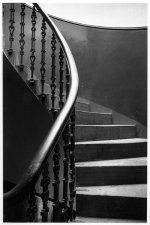Koolzakukumba
Real men use B+W
I've shot my first 35mm roll of the new Adox and posted some pics, including darkroom print scans, along with early impressions on my website: http://www.theonlinedarkroom.com/2013/10/adox-chs-100-ii.html
CHS 100 II is lovely and I'll be using a lot of it in future, I think. I'll be doing a comparison test of the film against Silvermax and maybe one other in the near future.
CHS 100 II is lovely and I'll be using a lot of it in future, I think. I'll be doing a comparison test of the film against Silvermax and maybe one other in the near future.







